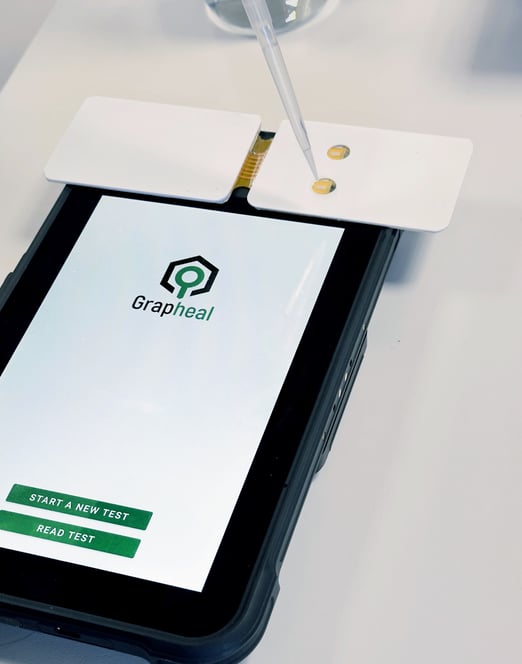Portable graphene sensor offers on-site PFAS detection
A portable graphene sensor that can detect per- and polyfluoroalkyl substances (PFAS) traces below the European Union threshold, has been developed, allowing for rapid on-site testing and identification of these ‘forever chemicals’.
Collaboration between Grapheal and EDYTEM

Detection and monitoring of PFAS is becoming a global priority as the world looks to address persistence, accumulation and toxicity of these ‘forever chemicals’. Many ‘solutions’ are focusing on water sources. However, these often use expensive laboratory tests, which introduce a time delay into the detection process.
The device is a result of co-development work between Grapheal, a deep-tech startup developing specialized biosensors, and the EDYTEM laboratory, a joint research unit between France’s Center for Scientific Research (CNRS) and Savoie Mont Blanc University.
Grapheal and EDYTEM worked together through their joint laboratory, ‘Fluorograph’ to develop a site-specific sampling device that will make detection and wider-scale mapping of contamination much quicker and easier.
Detecting PFAS with graphene
A spokesperson for Grapheal told Aquatech Online: “Detection is based on a graphene sensor (graphene field effect transistor) that is functionalized with a chemical layer interacting with PFAS.”
These miniature sensors are made using printed electronics and are housed in a device the size of a credit card. Water is applied to the device which sends its results to a smartphone or tablet app, which allows for direct, in-situ measurement of PFAS chemicals.
Initial tests focused on perfluorooctanoic acid (PFOA), one of the most common PFAS compounds. Shower water was used to test the sensors, with detection levels found to be in the region of 300 ng/L, which is far below the European Union regulatory maximum of 500 ng/L of total PFAS in drinking water.
Leslie states that the threshold of detection “is in the range of 100 ng/L”.
“The high sensitivity and ease of use of the Fluorograph device allow for quantitative detection of PFAS in situ and help meet the pressing need to map polluted areas and monitor them over time,” said Guy Royal, researcher at EDYTEM.
“It’s a valuable tool for regulatory organisations, field researchers and other staff with responsibility for water management.”

“As it is produced with printed electronics and uses a carbon sensor, Flurograph’s device has a very low environmental impact,” said Vincent Bouchiat, CEO of Grapheal.
He added: “On-site analysis is made easier, making it possible to increase the density of tests while significantly reducing the financial burden associated with frequent water analyses.”
Grapheal is now looking for industrial partners to support the industrialization of its solution and the increase in production volume.
Future applications
Due to its size and, therefore, its portability, there is potential for the device to be used in many other environments.
When asked about future plans, for example, developing the sensors for use in factories or treatment plants, the spokesperson told Aquatech Online: “We focus first on detection at the point of use, with single-use sensors. We have fully-working systems ready to be scaled up.”
And in terms of the chemicals themselves: “PFOA is, of course, our first target, but we are working on other PFAS detection as well.”
Loading component...
We promise never to send you spam and you can unsubscribe at any time!

